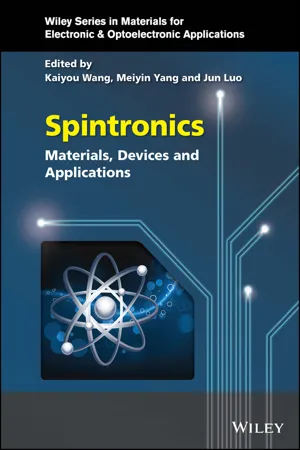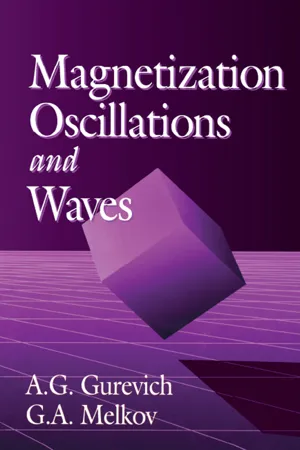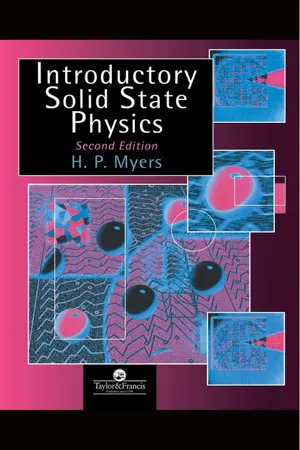Technology & Engineering
Antiferromagnetic Materials
Antiferromagnetic materials are a type of magnetic material where neighboring atomic magnetic moments align in opposite directions, resulting in a net magnetization of zero. This causes antiferromagnetic materials to exhibit no macroscopic magnetic field. They are used in various technological applications, such as in magnetic storage devices and spintronics, due to their unique magnetic properties.
Written by Perlego with AI-assistance
Related key terms
1 of 5
4 Key excerpts on "Antiferromagnetic Materials"
- eBook - ePub
Spintronics
Materials, Devices, and Applications
- Kaiyou Wang, Meiyin Yang, Jun Luo, Kaiyou Wang, Meiyin Yang, Jun Luo(Authors)
- 2022(Publication Date)
- Wiley(Publisher)
8 ]. Furthermore, AFMs also provide much greater structural flexibility than FMs because of numerous ways to achieve a zero net moments, which show a variety of unique functionalities of either intrinsic or engineered nature. In this chapter, to begin with, I recall the Antiferromagnetic Materials suitable for antiferromagnetic spintronics and their fundamental properties. I then focus on different effective ways to manipulate the antiferromagnetic states. Finally, the emerging research field that is exploring the links between antiferromagnetic spintronics and topological structures in real and momentum space is introduced.11.2 Antiferromagnetic Materials
In the early 1930s, Louis Néel was drawn to the issue that some materials with magnetic elements but exhibiting zero remanence at all temperatures did not follow the paramagnetic Curie law, which opens up the prelude for antiferromagnetic research [9 ]. AFMs have been the subject of intense research for more than 60 years since the discovery of exchange bias in the context of FM/AFM system [10 ]. Especially, AFM-based devices, such as spin valves and magnetic tunnel junctions, were widely investigated at the beginning of the 21st century because of their technological importance: the AFM acts to pin or harden the FM layer. So, AFM has the role of auxiliary element. The antiferromagnetic spintronics aims to complement or even substitute ferromagnets in the active components of spintronic devices [3 –6 ]. Here I strictly select some Antiferromagnetic Materials from the perspective of spin transport. Table 11.1 illustrates the AFMs with a bulk Néel temperature above room temperature or playing a key role in the development of antiferromagnetic spintronics, which is divided into three categories relying on their metallic, insulating, or semiconducting or semimetallic nature.Néel temperatures of some metallic, insulating and semiconducting or semimetallic antiferromagnets.Table 11.1Electrical category - eBook - PDF
Spintronics
Materials, Devices, and Applications
- Kaiyou Wang, Meiyin Yang, Jun Luo, Kaiyou Wang, Meiyin Yang, Jun Luo(Authors)
- 2022(Publication Date)
- Wiley(Publisher)
I then focus on different effective ways to manipulate the antiferromagnetic states. Finally, the emerging research field that is exploring the links between antiferromagnetic spintronics and topological structures in real and momentum space is introduced. 11.2 Antiferromagnetic Materials In the early 1930s, Louis Néel was drawn to the issue that some materials with magnetic ele- ments but exhibiting zero remanence at all temperatures did not follow the paramagnetic Curie law, which opens up the prelude for antiferromagnetic research [9]. AFMs have been the sub- ject of intense research for more than 60 years since the discovery of exchange bias in the con- text of FM/AFM system [10]. Especially, AFM-based devices, such as spin valves and magnetic tunnel junctions, were widely investigated at the beginning of the 21st century because of their technological importance: the AFM acts to pin or harden the FM layer. So, AFM has the role of auxiliary element. The antiferromagnetic spintronics aims to complement or even substitute ferromagnets in the active components of spintronic devices [3–6]. Here I strictly select some Antiferromagnetic Materials from the perspective of spin transport. Table 11.1 illustrates the AFMs with a bulk Néel temperature above room temperature or playing a key role in the development of antiferromagnetic spintronics, which is divided into three categories relying on their metallic, insulating, or semiconducting or semimetallic nature. 11.2.1 Metallic Antiferromagnets Metallic AFMs including Mn-based alloy such as PtMn [11, 12], IrMn [13–15], PdMn [16], FeMn [17], or NiMn [16], are mainly produced by magnetron sputtering and are most widely used in industrial applications, such as read heads for magnetic storage or spin valves [18, 19]. - eBook - PDF
- A.G. Gurevich, G.A. Melkov(Authors)
- 2020(Publication Date)
- CRC Press(Publisher)
3 __________ Antiferromagnets and ferrites 3.1 Antiferromagnetism and ferrimagnetism Antiferromagnets are defined as substances in which the elementary magnetic moments are ordered, but the spontaneous (in the absence of an external magnetic field) magnetic moment of an elementary magnetic cell (and, hence, the moment of any macroscopic region) is either equal to zero or has a small value, as compared to the sum of elementary magnetic moments. The possibility of the existence of a small moment is included into this definition because the substances with an antiferromagnetic type of magnetic ordering but with a small average moment— the so-called weak ferromagnets— are usually related to antiferromagnets. In many antiferromagnets the elementary magnetic cell contains equal numbers of the same magnetic moments aligned in opposite directions. The static and dynamic magnetic susceptibilities of an antiferromagnet are small and (in single crystals) highly anisotropic. In ferrimagnets the magnetic ordering is of the same type as in antiferromagnets. But the magnetic moment of an elementary magnetic cell has a great value, smaller than but comparable to the sum of elementary moments. The elementary magnetic cell of a ferrimagnet contains, in the simplest case, two groups of elementary magnetic moments directed in opposite sides. The numbers of the moments, or their values, or both are not equal to each other. The static and the dynamic susceptibilities of a ferrimagnet, in contrast to antiferromagnets, are of the same order as for ferromagnets. The cause of ordering of magnetic moments in antiferromagnets and ferrimag- nets is the exchange interaction of spins (Section 1.1). The exchange integrals in (1.26), corresponding to interactions between different moments, may have different signs. But the sign of the integral which corresponds to the strongest of these interactions should be negative, to stimulate the antiparallel orientation of the moments. - eBook - PDF
- H.P. Myers(Author)
- 1997(Publication Date)
- CRC Press(Publisher)
This can occur if the kinds of atom are the same, but the lattices A and Ǻ are different or the lattices may be identical, but occupied by ions with different atomic moments. At low temperatures the antiparallel sublattice magnetizations do not cancel and a resultant magnetization M A íM B exists. There is a strong similarity to a ferromagnetic substance. Detailed analysis shows, however, that a ferrimagnetic substance may have a resultant magnetization that varies with temperature in a manner either similar to or very different from that typical of a ferromagnetic substance, depending on the various parameters involved (Fig. 11.25). We find that ferromagnetic and ferrimagnetic substances are perhaps best distinguished (neutron diffraction excepted) by their high- temperature paramagnetic properties. For a ferrimagnetic substance, Ȥ is given by (11.54); at temperatures well above T C , Ȥ −1 asymptotically approaches a linear variation with temperature (with negative intercept on the temperature axis) similar to that for an antiferromagnetic material, whereas in the range immediately above TC it has a pronounced and characteristic curvature concave to the temperature axis. This is in direct contrast with the behaviour of a ferromagnetic substance, for which Ȥ −1 is in principle linear in T, although slight curvature does arise near T C , but this is always convex to the temperature axis (Fig. 11.26). This is the feature that most surely distinguishes a ferrimagnetic from a ferromagnetic substance. Magnetism 399 Figure 11.23 A schematic presentation of the anisotropy in the temperature variation of the antiferromagnetic susceptibility (a), together with experimental data for a crystal of MnF 2 (b). (Experimental data after Trapp and Stout 1963.) Magnetite, Fe 3 O 4 , is a ferrimagnetic substance and has provided the name ‘ferrite’ for a group of mixed oxides with the composition TOFe 2 O 3, where Τ is a divalent transition metal ion, Cu 2+ or Zn 2+ .
Index pages curate the most relevant extracts from our library of academic textbooks. They’ve been created using an in-house natural language model (NLM), each adding context and meaning to key research topics.



